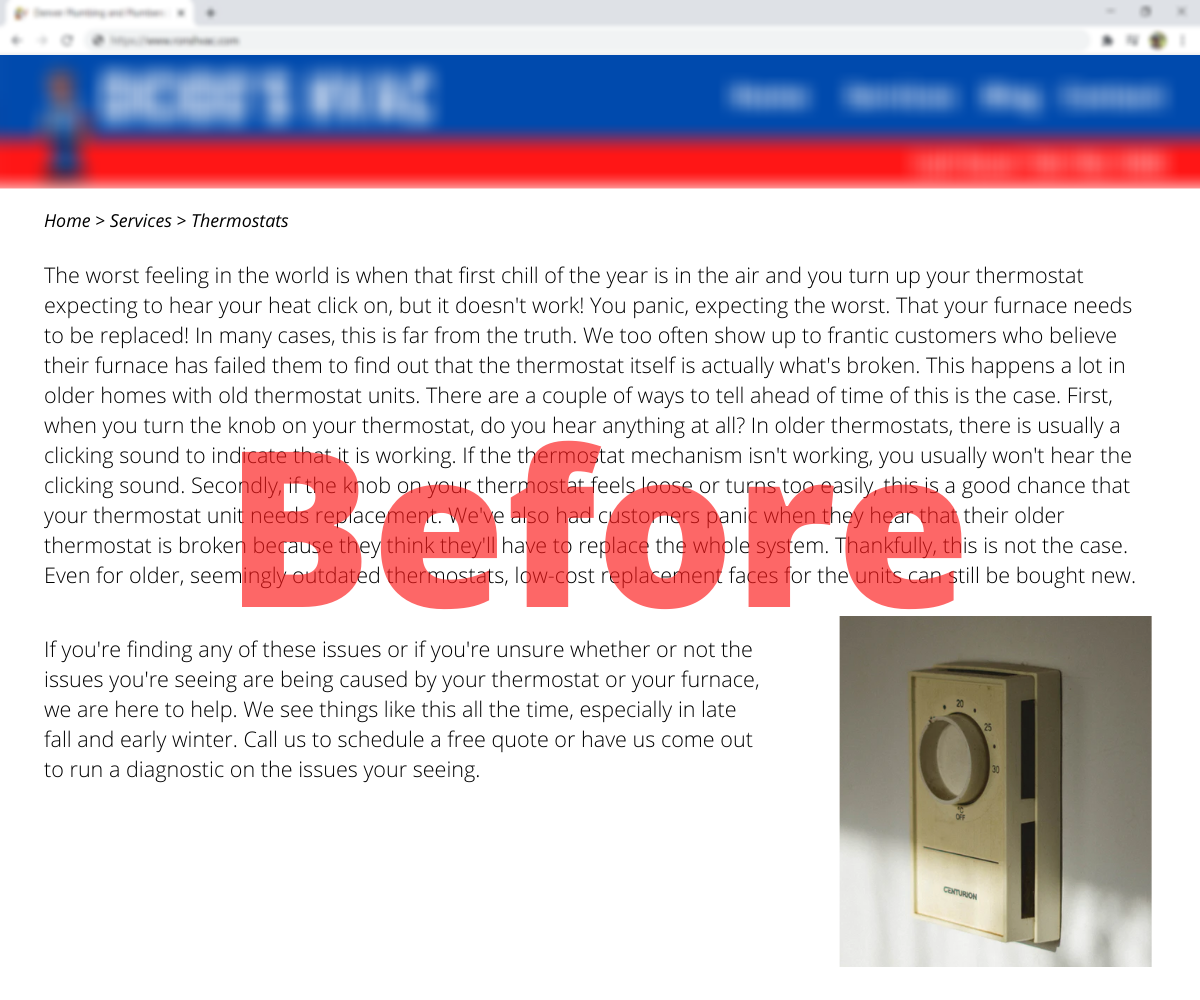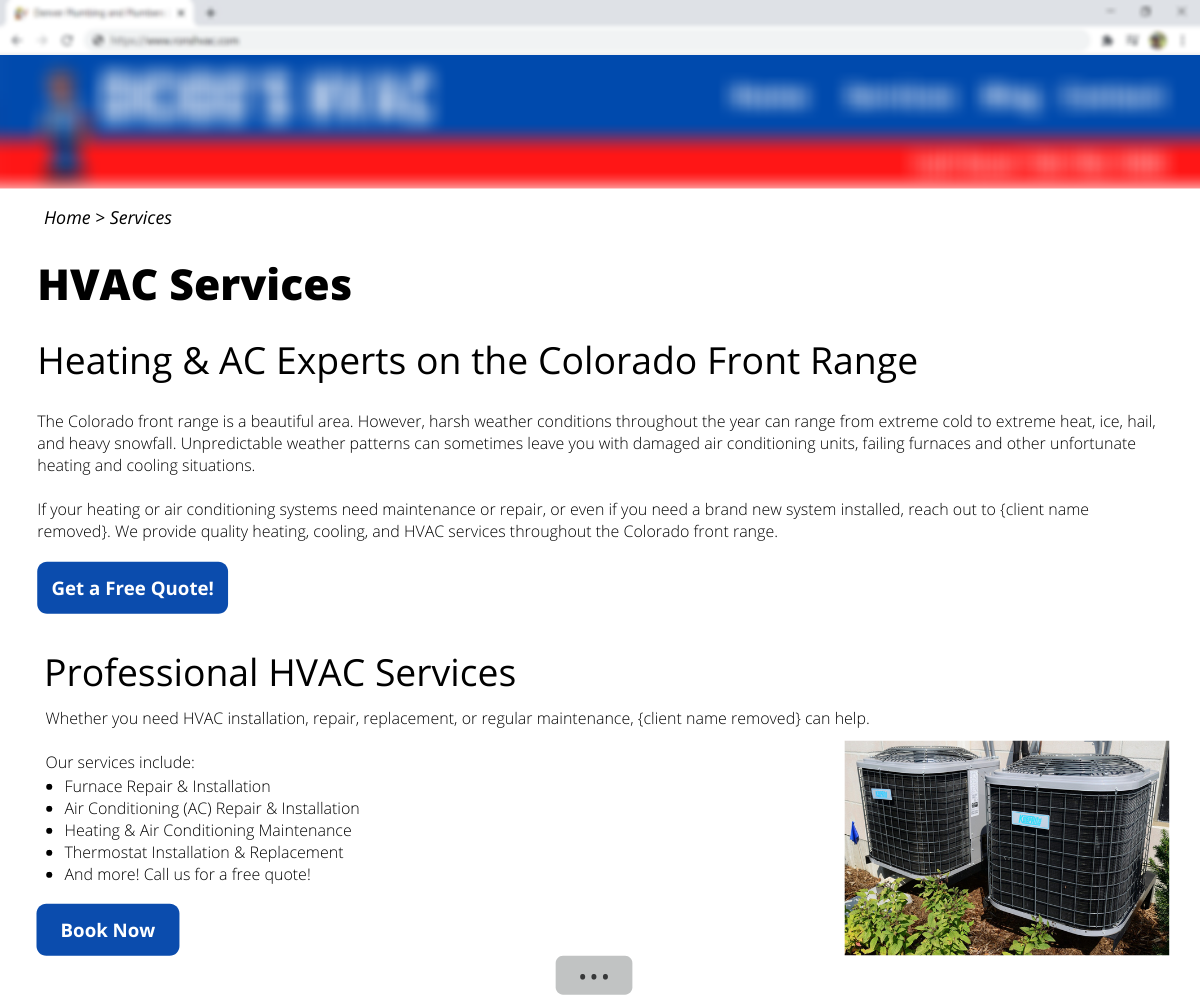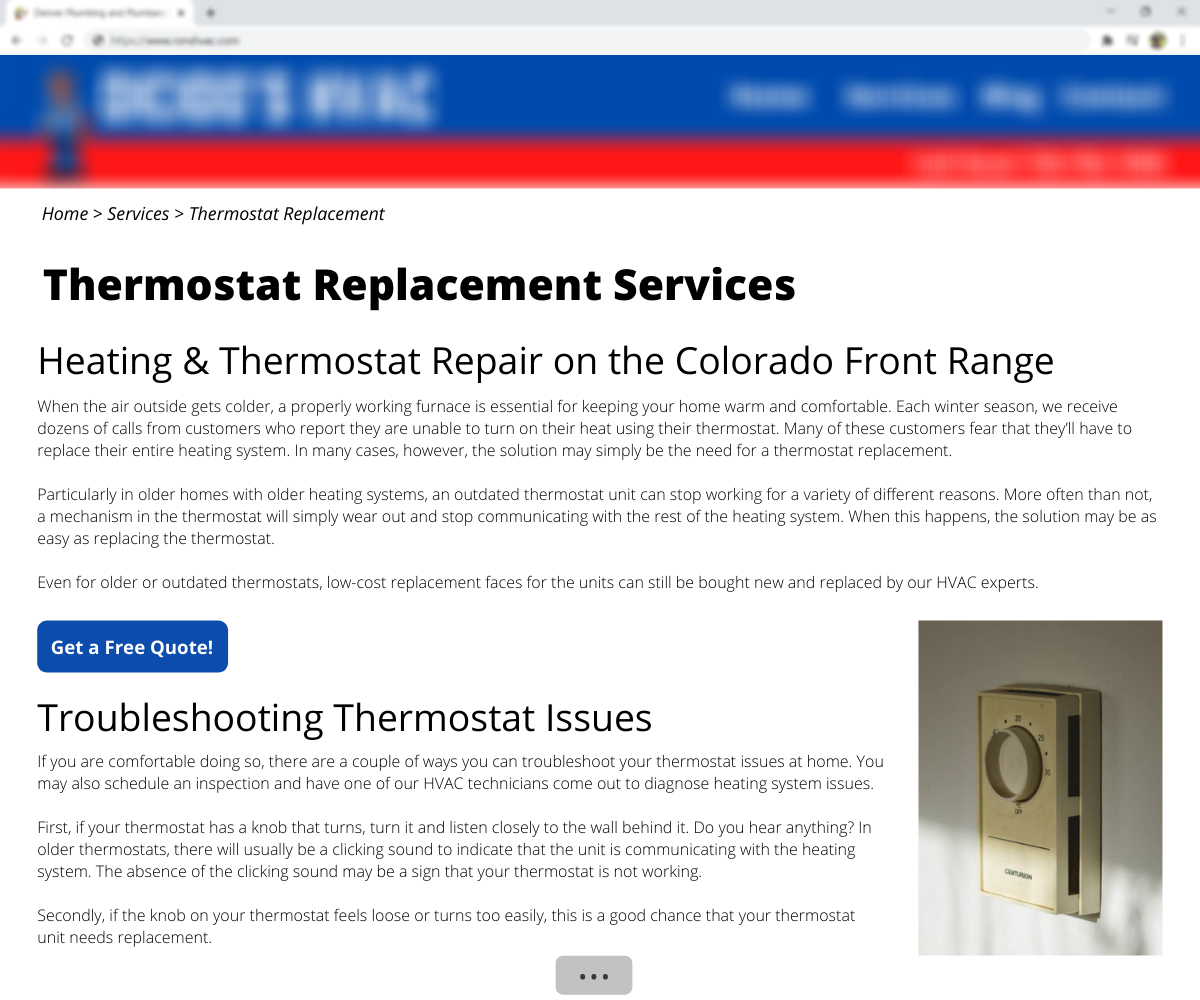
What is a Content Template
A content template (also called a content template) is a simple layout that illustrates how to create and use different types of content throughout a web page. A content template is different from a web design template in that it outlines the order and structure for how to create content for a page, whereas a design template shows placement for various design elements within the page.
Using a Content Template
Content templates can be useful for many different situations and roles within a business. Small business owners and those developing web pages for new services or products may find using a template especially helpful.
In short, you probably have a lot of ideas and thoughts about your business. However, if you’re finding yourself feeling overwhelmed or uninspired when it comes to actually writing about your business, a content template will help guide you in the creation of engaging, visually appealing content for your website.
Additionally, content elements such as headers (H1s, H2s, H3s, etc) as well as calls to action (CTA) can have a direct positive effect on search indexing, SEO, and user experience. For content creators without a web content background, the placement and inclusion of these headers and CTAs can be challenging but are necessary for proper page indexing and for improving SEO rankings. A content template can help guide this process and offer suggestions about where and how to include these and other important elements that help improve user experience within a webpage.
Content Template Case Study - Ron’s HVAC
The following short case study documents the way content templates were used to help create engaging content for a website we’ll refer to simply as “Ron’s HVAC”. Read below to follow how Service Page Content Templates were used to help optimize and improve the user experience for two particular service pages on the Ron’s HVAC website.
DDW Content Templates (Click Link to Download):
- Service Page Content Template
- Blog Post Content Template
- Landing Page Content Template
- About Page Content Template
- Employee Bio Page Content Template
Content Template Usage #1 - Building Out Shorter Content

In this example, the content the customer provided for their services page was very short. Given that there are no headers or different sections to guide the reader, the content also looks very plain on the page, which can negatively impact user experience.
Additionally, the way your page content is structured has a great impact on search indexing and SEO results.
Using our Service Page Content Template, the original content was expanded to create more visually appealing and engaging content that is properly structured for search indexing. The addition of headers, page sections and call-to-actions (CTAs) help improve the user experience by guiding the website user to navigate the page and decide what to do next.

Content Template Usage #2 - Guiding the Content Process
If you own, operate or facilitate website decisions for a company, you no doubt have a world of knowledge pertaining to the details of your business. However, it’s often the people who know the most about business operations that have difficulty deciding what to include in a page of content.
In the same way that a content template can help you structure short or flimsy content, it can also help you decide which subject matter to focus each part of your page’s content. In the first example above, the original content solely focuses on the overarching theme for the page. In the second example, the page concepts are broken down into smaller components, providing much more optimized and informative content.
Content Template Usage #3 - Adding Structure to Content

A content template can be especially useful if you have plenty of information to include in a website page, but are unsure how to structure it.
In our next example, the web page contains a decent amount of informative text for the page. Additionally, the information within the text is ideal for bringing in business or providing answers to their customer’s questions.
Using a content template, we molded the original content into a more readable format. We used headers and CTAs to guide the reader on where to read and what we want them to do next. As a result, the page is more visually appealing and the overall user experience is more positive.

Case Study Conclusions
In the 90 days following our content template improvements to the pages above, we saw significant improvement with the SEO and user experience metrics compared to the previous 90 days. Below is an outline of the analytics, most of which improved by over 200%!
Main Service Page
Prior to Content Template Improvements (90 Days)
- Keywords in Top 100 Search Results: 2
- Average Page Rank: 87
- Search Engine Click Through Rate (CTR): 0.26%
- On Site Conversions (90 days): 14
After Content Template Improvements (90 Days)
- Keywords in Top 100 Search Results: 7 (250% Improvement)
- Average Page Rank: 12 (75 points Improvement)
- Search Engine Click Through Rate (CTR): 1.63% (527% Improvement)
- On Site Conversions (90 days): 62 (343% Improvement)
Thermostat Replacement Page
Prior to Content Template Improvements (90 Days)
- Keywords in Top 100 Search Results: 4
- Average Page Rank: 32
- Search Engine Click Through Rate (CTR): 0.89%
- On Site Conversions (90 days): 21
After Content Template Improvements (90 Days)
- Keywords in Top 100 Search Results: 11 (175% Improvement)
- Average Page Rank: 3 (29 Point Improvement)
- Search Engine Click Through Rate (CTR): 2.99% (236% Improvement)
- On Site Conversions (90 days): 67 (219% Improvement)
